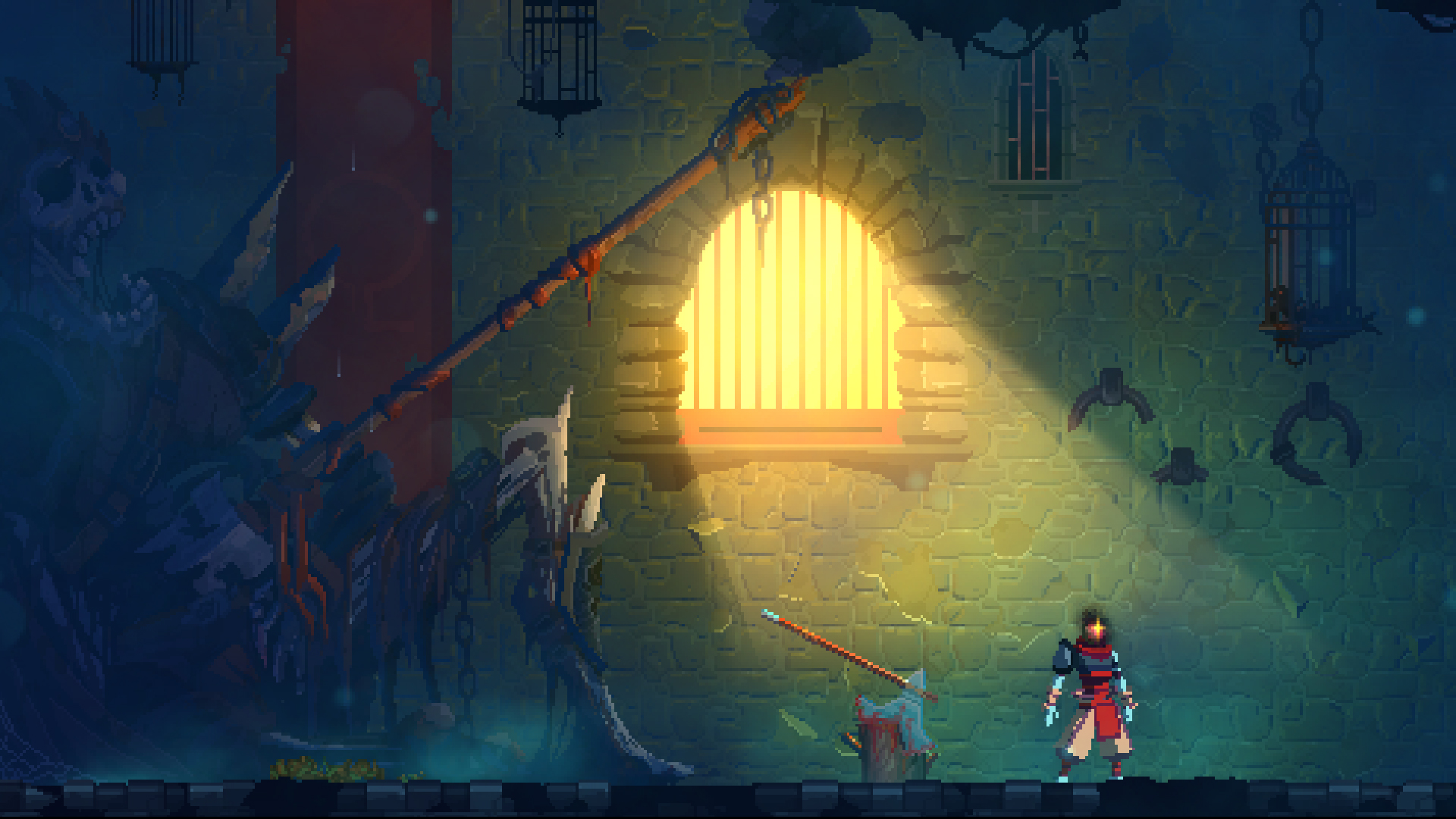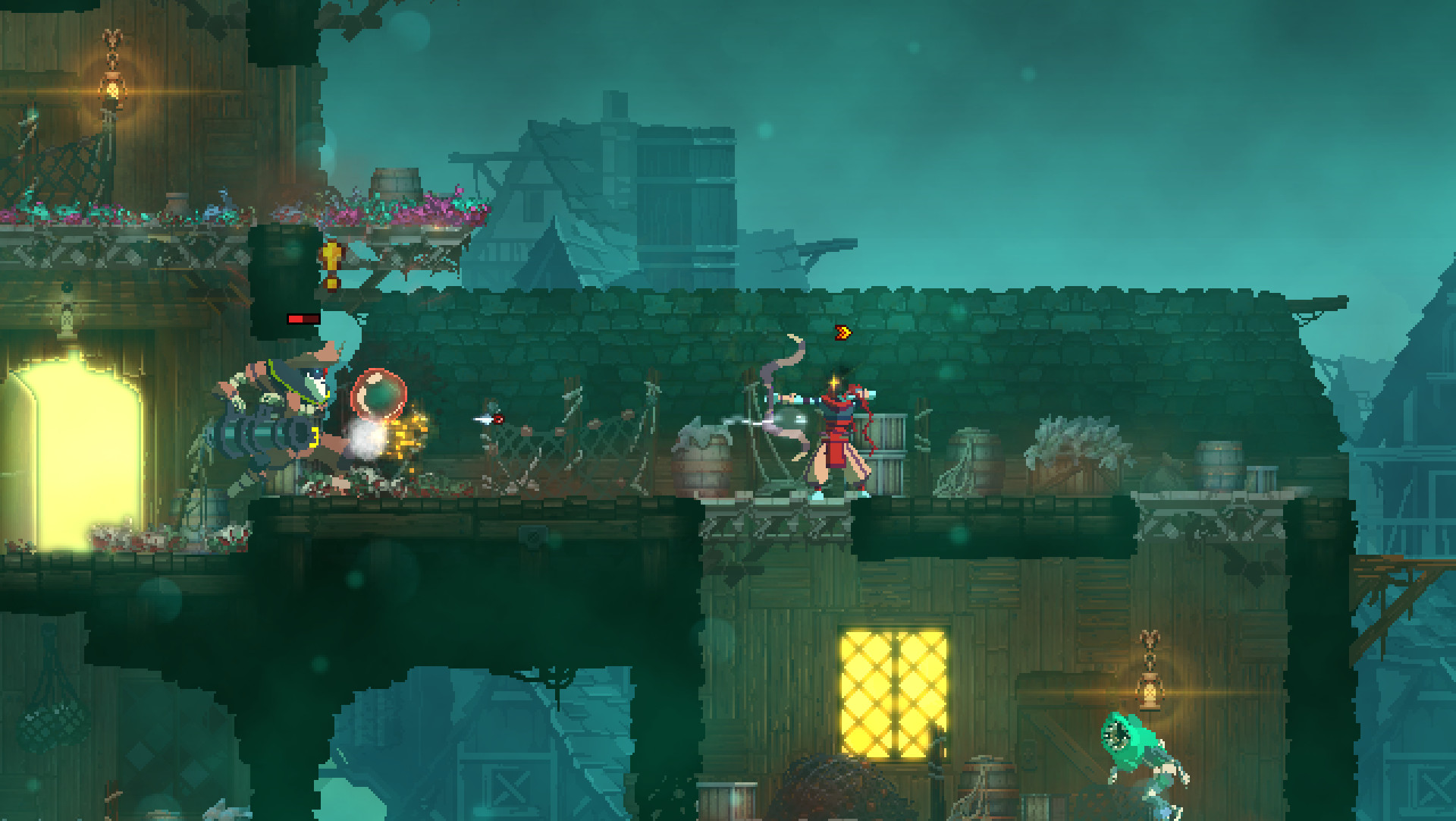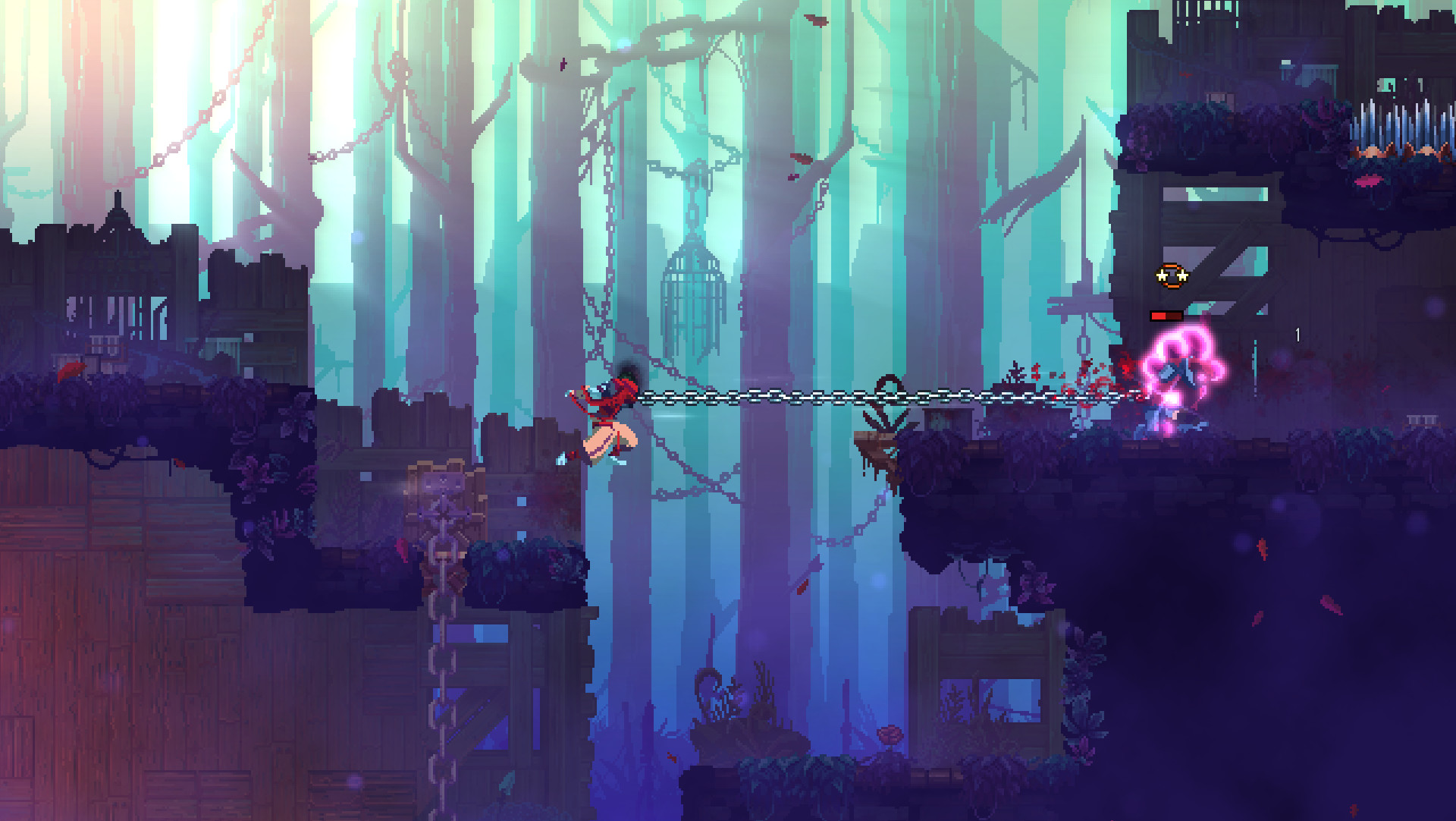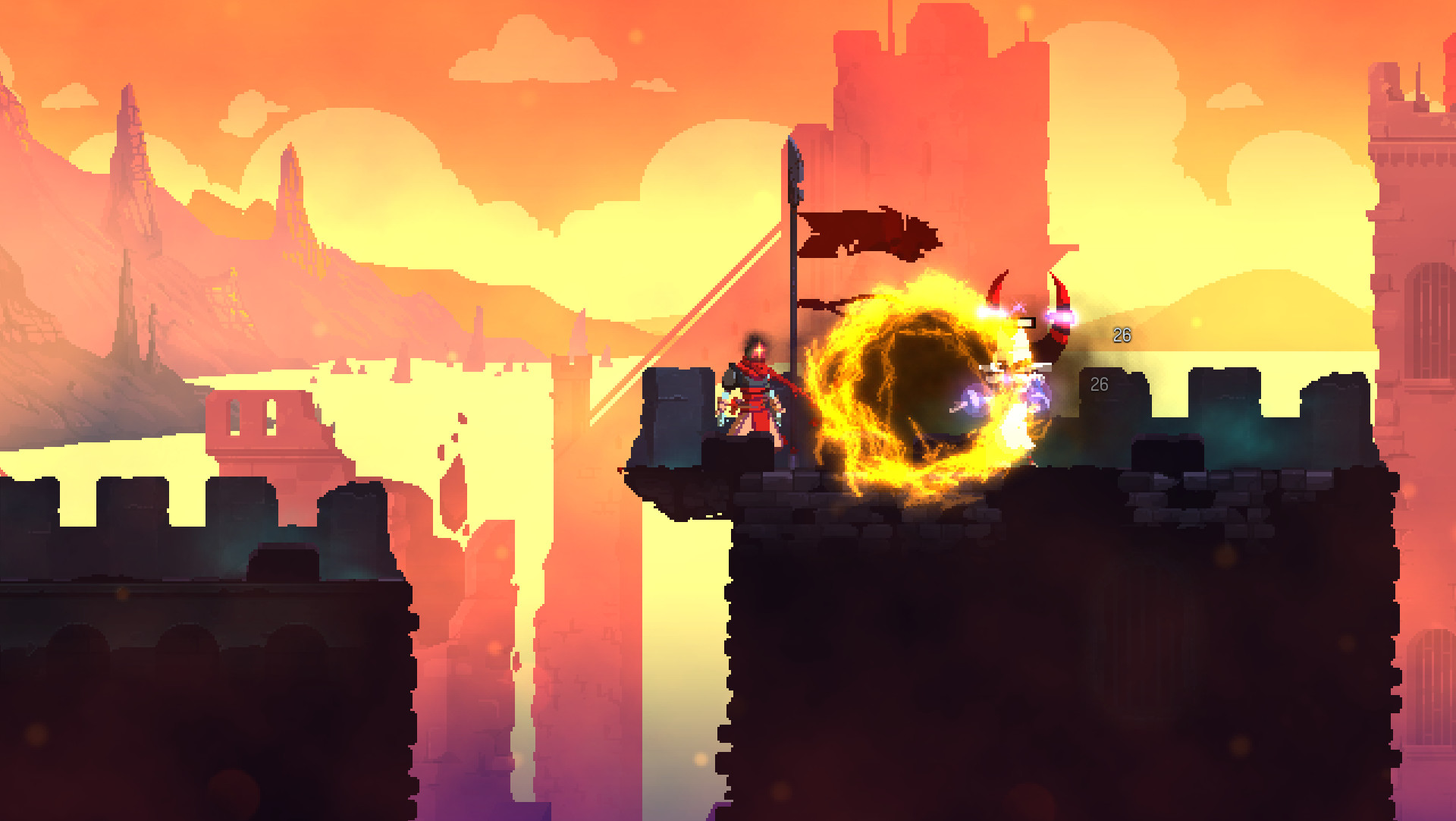Dead Cells Review: Beautiful Death
by August 16, 2018 @ 6:42 am

Reviewed on PlayStation 4
Dead Cells is a beautiful game. It looks great. It sounds great. It plays great. Hell, playing it makes you feel great, too. Beauty aside, Dead Cells is also a vicious game, brutal to its very core and unrelenting. And yet, somehow, even despite its dastardly tactics, the game is welcoming — so much so that you will have a hard time pulling away from it, and you’re likely to find yourself eager to play again when you’ve been away for too long.
You have a lot to learn when playing Dead Cells. Thankfully, the game doesn’t shy away from teaching you everything you need to know. This is a roguelike, and as such, you’re going to die a whole bunch. This is one of those games where death is a certainty, and just because you did well in one playthrough doesn’t mean you’re going to get just a little bit further the next time. If you allow yourself to learn from the game, however, things will go very differently, and you will go far every time.
Combat in Dead Cells is fast-paced hack-and-slash fare. There are a variety of weapons for you to discover on your journey. You can hold two of any of the many swords, dual blades, spears, hammers, bows, and whips you’ll find along the way. These act as your primary weapons and can be used at all times. There are also secondary weapons in the form of grenades, bear traps, automatic crossbows, and so on, each with their own cooldown times.

It took several playthroughs and probably half a dozen hours for me to grasp the usefulness of the secondary weapons. That’s because during those initial hours I was focused on the quickness of the combat and the convenience of swords and bows. I was so determined to progress using frantic button presses and instant damage that I completely ignored my ice grenades and auto-crossbows. I got a somewhat far during that entry period, sure, but I always met a swift demise at the hands of a formidable foe.
But then I learned.
I decided to put those secondary weapons to use. I started tossing ice grenades while taking on bosses and larger groups of enemies. When I froze those baddies, I would then toss something like an infantry grenade or fire grenade and add even more damage, all the while swinging my blade and dealing out as much hurt as possible. And that’s when progression become not necessarily easy, but certainly more consistent. I began to get deeper into Dead Cells, and reaching the end went from being a pipe dream to an attainable reality.
A very select few roguelikes make progression feel substantial. Dead Cells is definitely among those ranks. While your character resets at the start of each playthrough, you unlock weapons, perks, and upgrades while you go through caves, sewers, and catacombs that remain unlocked in subsequent playthroughs. Items are unlocked using cells, which are obtained primarily from enemies but can also be found in hidden treasure chests.

When you reach a mid-level stage — which allows you to heal up and add some perks to your character — you can purchase new items using these cells. If you die, you lose all the cells you’ve collected up to that point, so there’s no reason to horde cells. If you got ’em, use ’em. Some items are worth hundreds of cells, while others will only cost you tens. Thankfully, if you spend 24 cells of the necessary 150 for any particular item, this progress will carry over to the next playthrough. So … Use. Those. Cells.
Dead Cells is a game of skill, but it’s also a game of luck at times. Depending on the randomized items available in any given stage, you could either have a hard time getting ahead, or you can have a really hard time. (There’s no easy time here, in case you were wondering.) You’ll undoubtedly go far, but just when you feel victory is near — your hands sweaty and shaky at the sheer thought of defeating a late-game boss for the first time — the odds may be too much for you, and it’s back to the start.
While fun at pretty much all times thanks to the rewarding gameplay loop, Dead Cells still has those minor hiccups that make roguelikes tedious at times. The game will get grindy, and you’ll grow tired of seeing the same couple levels at the start. This is especially true when you unlock better weapons and come across them in the very first stage, which almost removes any challenge from those starter enemies.

There’s a reason I used the word “beautiful” to describe Dead Cells at the start of this review. Part of that reason is because the game’s pixel art is phenomenal. The game’s use of rich colors creates a world that’s like a sci-fi dreamscape. Add to that the fluid animations that are unlike anything we’ve seen in a 2D action-platformer, and you’ve got what could easily be considered one of the most aesthetically driven titles all year.
The music of Dead Cells is also great, featuring catchy themes that range from fiery acoustic guitar tunes to solemn violin-and-piano compositions. The songs tend to loop a bit, and because you’ll be playing the game over and over again, you will hear the same themes a lot throughout your adventure. Still, the game’s soundtrack is no joke, and it’s a joy to listen to while you cut dudes up.
If you jump into Dead Cells, you’re going to get a kick out of it. It’s not exactly a Metroidvania, but progression is clever and requires a knack for unlocking the best items and scouring each level for proper upgrades. The game’s timer indicates that you can technically get to the end in under an hour, but you’ll have to spend at least a dozen hours just to master it enough to reach the grand finale. Even after you do, you’ll probably return for several dozen more hours, because Dead Cells is just too much fun to stay away from.
Score: 8 out of 10
Follow this author on Twitter.